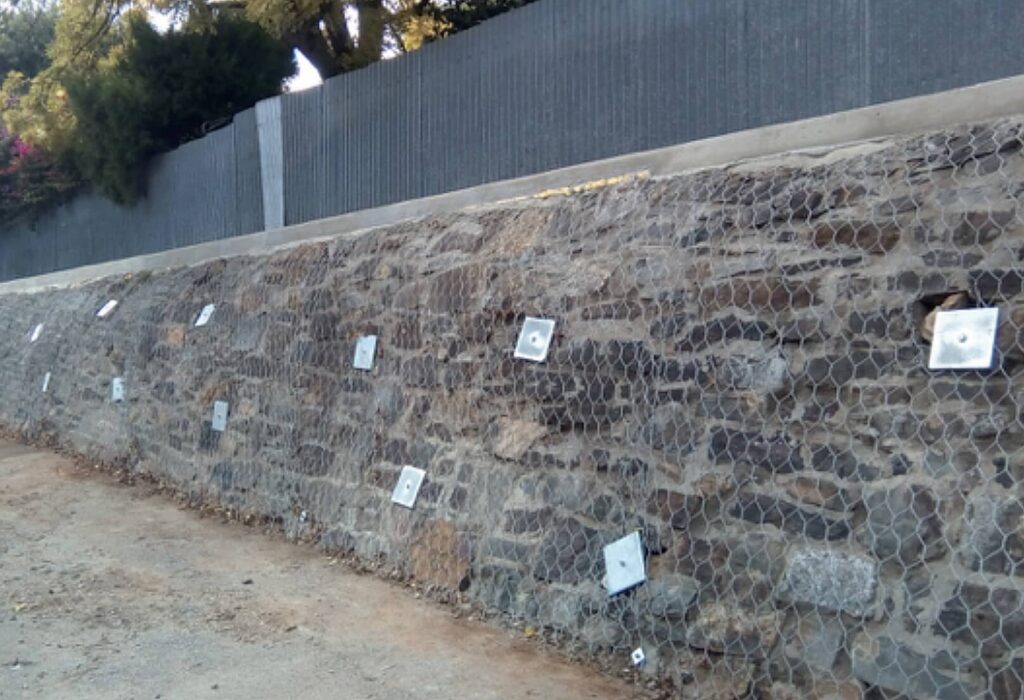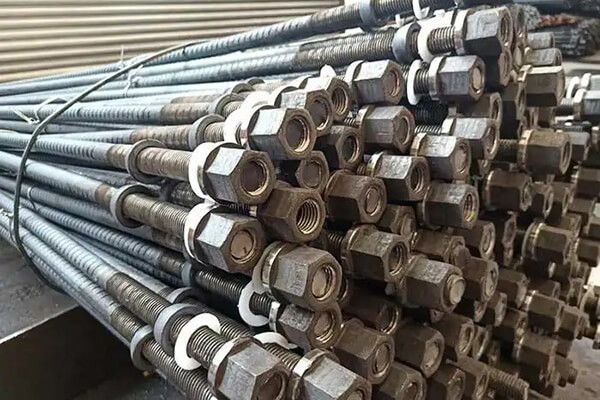Williams Anchors: Industry-Leading Anchoring Solutions for Enhanced Structural Assistance
Wiki Article
Reliable Rock Anchors for Secure and Secure Foundations
In the world of civil engineering, the duty of reputable rock supports can not be overstated, as they are critical in developing safe and secure structures throughout a range of applications. Comprehending the different types of rock supports, their certain applications, and the complexities of installment and maintenance is essential for maximizing their performance.Kinds of Rock Anchors

Passive supports rely on the weight of the framework and the bordering dirt or rock to supply resistance. Active anchors, on the various other hand, include the application of stress with a high-strength cable television or pole, developing a pre-stressed condition in the support - Williams Anchors.
Grouted supports are another significant classification, wherein a steel bar or cable is placed into a pierced hole, complied with by a cementitious cement. When healed, the grout bonds with the bordering rock, developing a robust anchoring system. Each type of rock support provides distinct advantages based upon the certain geological conditions and structural needs, therefore playing an important function in the total stability and longevity of constructed centers.
Applications in Construction
Rock anchors play a critical duty in various building and construction applications, supplying important assistance and security in varied environments. These innovative remedies are utilized in tasks varying from massive infrastructure developments to smaller household structures. One of the main applications of rock anchors remains in the stabilization of inclines and maintaining wall surfaces, where they assist avoid soil disintegration and maintain structural stability.
Furthermore, rock supports contribute in securing foundations for bridges, tunnels, and skyscrapers, guaranteeing they can stand up to side pressures such as wind and seismic activity. Their flexibility enables for installment in difficult geological problems, making them perfect for tasks in hilly or rough terrains.

Secret Choice Standards
Picking the appropriate rock support for a specific application calls for mindful factor to consider of several vital requirements. The geological conditions of the website must be completely evaluated. Recognizing rock kind, toughness, and security is vital to make certain that the anchor will do effectively under tons conditions.
An additional essential variable is the rust resistance of the support materials. In environments subjected to wetness or chemicals, utilizing corrosion-resistant materials will prolong the life-span of the supports and keep structural stability over time.
Additionally, the support's installation method must align with my company the job's demands and restraints. Alleviate of setup, as well as the prospective effect on bordering frameworks, need to be considered.
Installation Methods
Efficient installment techniques are vital for the successful performance of rock anchors. Proper installment ensures that the anchors accomplish the preferred load-bearing capability and stability within the geological conditions. The very first action in the installation procedure involves website analysis, where geological surveys determine the rock type, problem, and any type of possible challenges.Once the website is evaluated, the suitable drilling method should be chosen-- alternatives include rotary drilling, ruby boring, or percussion exploration. The choice depends on rock firmness and environmental factors to consider. Exact exploration from this source deepness and angle are necessary to guarantee that the anchors align with structural requirements and lots distribution.
After exploration, the next stage involves cleaning up the borehole to get rid of debris, which can compromise bond strength. Following this, the anchor is put, and if needed, a cement or material is infused to improve bond. The healing time of these materials should be stuck to, making sure that the anchors accomplish full strength prior to any kind of load is used.
Upkeep and Evaluation
Correct maintenance and inspection of rock anchors are important to ensure their lasting performance and reliability (Williams Anchors). Normal assessments help identify any type of possible problems, such as rust, displacement, or architectural fatigue that might compromise the stability of the anchoring systemRegular assessments need to be carried out at defined intervals, taking into account environmental factors and the certain application of the rock supports. Aesthetic evaluations must concentrate on the subjected sections of the anchors, looking for indicators of rust, cracks, or various other abnormalities. In addition, it is vital to assess the surrounding geological conditions to discover any type of changes in soil or rock that might affect anchor performance.
In some cases, even more innovative techniques such as load testing or non-destructive testing might be warranted to ascertain the anchors' load-bearing capability and overall wellness. Correct documentation of inspection searchings for, upkeep activities, and any type of repairs or substitutes executed is essential for recurring assessment and conformity with sector requirements.
Conclusion
Finally, reliable rock supports play an important role in guaranteeing safe and secure and secure foundations across different building and click to read more construction applications. By efficiently moving lots and improving stability versus lateral pressures, these anchors contribute dramatically to the long life and integrity of frameworks such as bridges, tunnels, and preserving wall surfaces. Strategic choice, installation, and upkeep of rock anchors are important for optimizing performance and safeguarding public security, ultimately highlighting their relevance in modern design practices.Report this wiki page